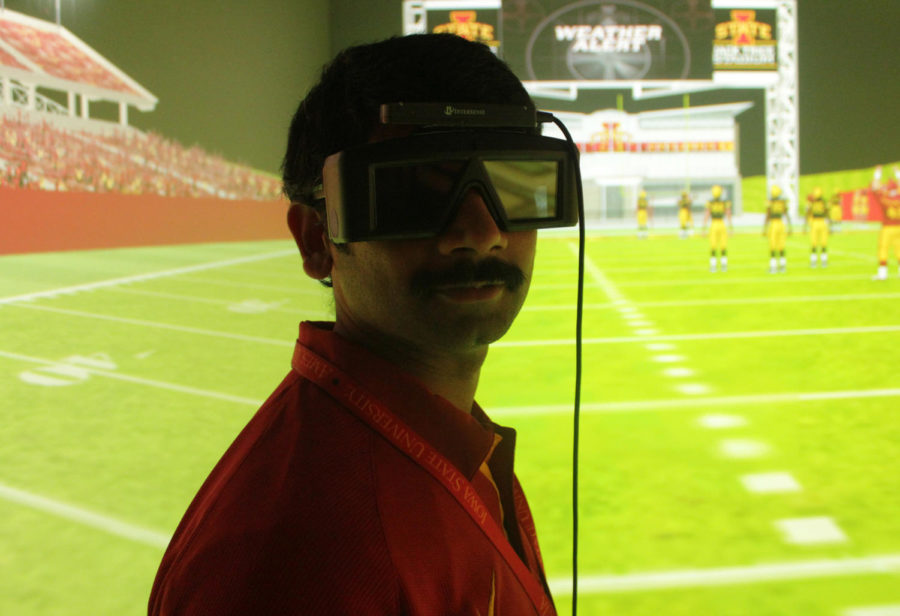Virtual reality center offers recruits taste of Jack Trice
October 29, 2015
ISU recruiters are giving ISU football hopefuls a taste of game night at Jack Trice Stadium, albeit in the digital world.
“Most college football programs go through a similar process,” said Vijay Kalivarapu, staff research scientist at the Virtual Reality Applications Center in Howe Hall. “They bring in recruits … and take them to an empty football stadium when games are not held. We wanted to do something a little bit different.”
The world’s most advanced virtual reality room is housed in the center — the C6. It’s a 10-by-10-foot room where all four walls, the floor and ceiling are 4K high-resolution screens putting out more than 100 million pixels.
Once people run an application and put on the virtual reality glasses, they become fully immersed in a whole new world.
“We used Unity [Game Engine] and we brought in some models,” Kalivarapu said. “We got the model for Jack Trice Stadium from the same people that designed the south end zone.”
The gameday application was created to give student-athlete recruits a taste of what it’s like to be in Jack Trice Stadium during the game. The application is complete with cheerleaders, booming crowds, the ISU band preforming the “Gangnam Style” dance and the Cyclones rushing onto the field against the Hawkeyes.
“[The gameday app] opened up some research challenges for us,” said James Oliver, university professor and director of the Virtual Reality Applications Center. “I’m always interested in finding ways to make it easy to use this complicated equipment.”
Oliver said what the team learned from working on the gameday app can open doors to other industries. Experimenting with a game engine and successfully running a virtual reality application can make the technology accessible to the video game industry.
The C6 was also used for an architectural design review in the early stages of the south end zone’s development. The C6 allowed the team to be in a digital design of the stadium at a one-to-one scale. There, the team was able to see different models of seating layouts in real time.
Currently, the team at the Virtual Reality Applications Center is working on a portable version of the gameday application using the Oculus Rift, a virtual reality head-mounted display. A portable version will allow recruiters to bring the gameday experience to recruits in their living rooms during off-season recruiting.

















